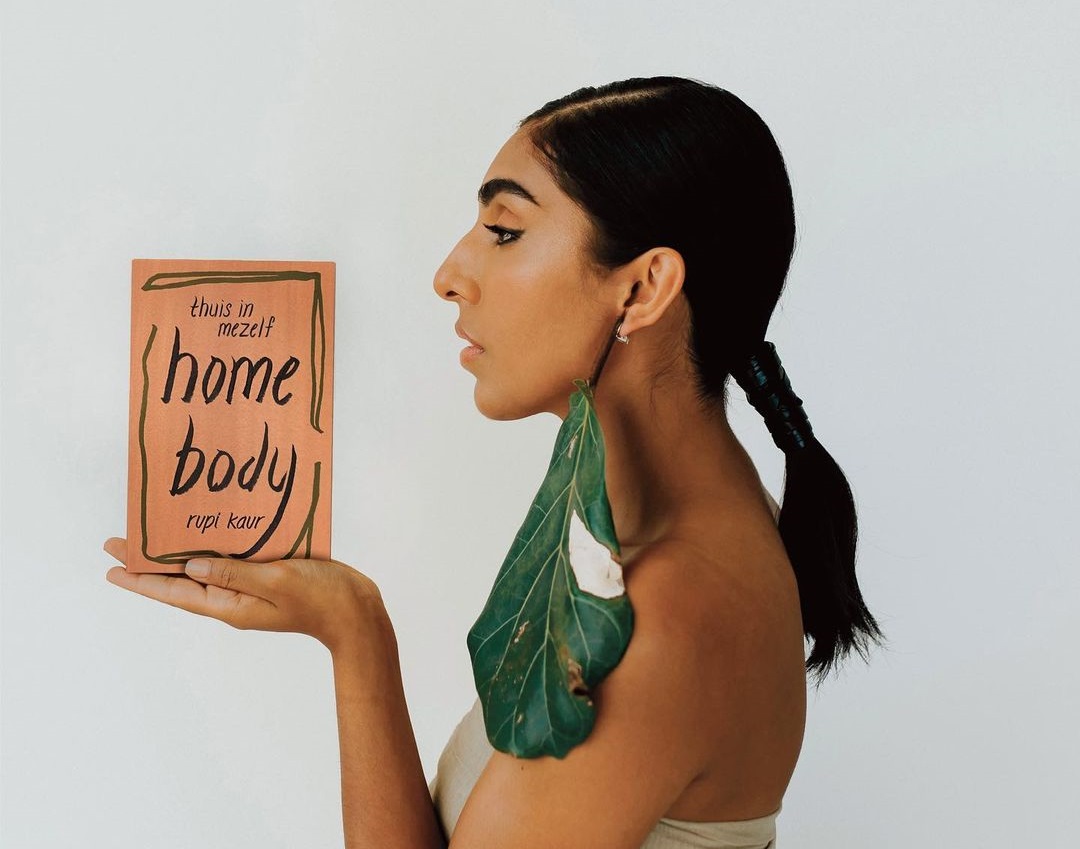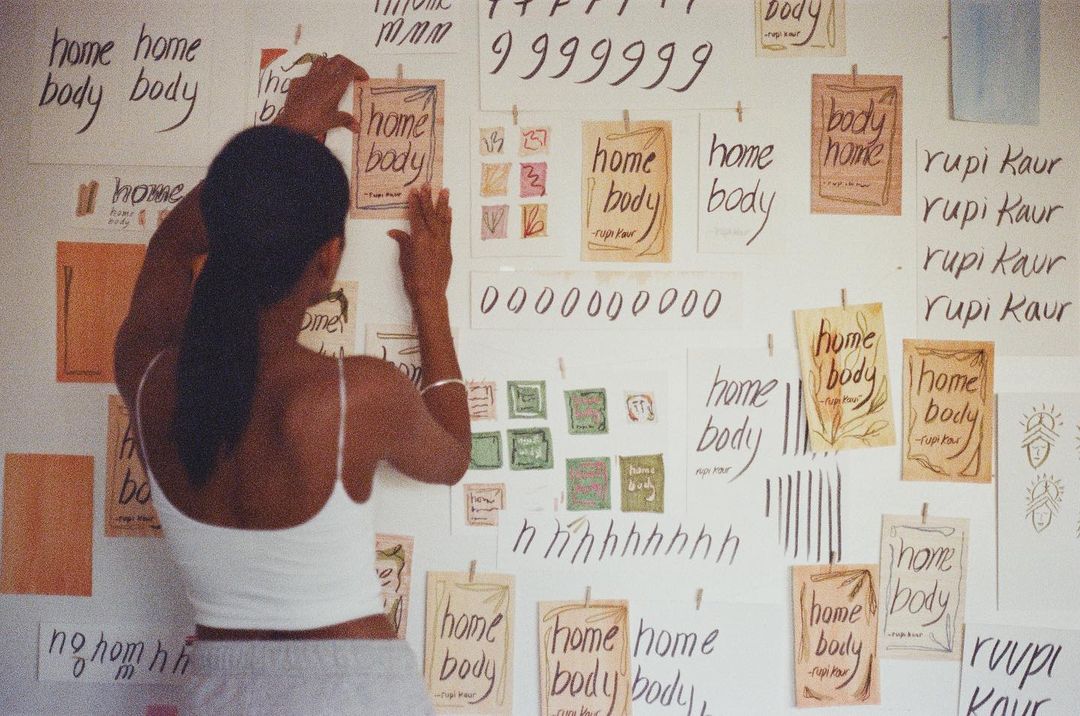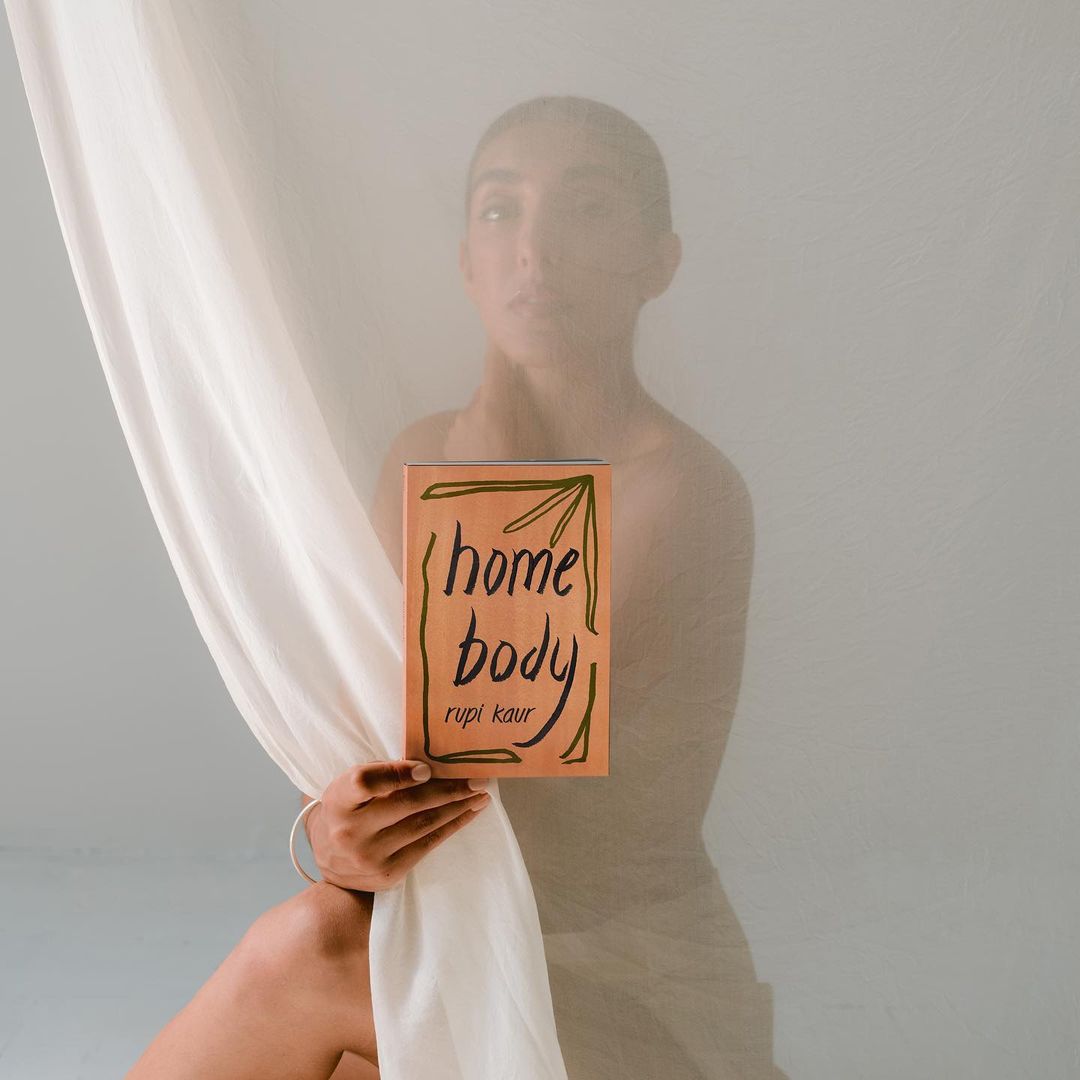In 2014 a 21-year-old Rupi Kaur self-published her first poetry collection – milk and honey. The book debuted as the #1 bestseller and went on to sit on the New York Times Best Sellers List for a whopping 165 weeks. In 2017, Kaur published her second poetry collection: the sun and her flowers, which sold millions of copies.
Recently, Kaur published her third collection entitled home body.
“Rupi Kaur constantly embraces growth, and in home body, she walks readers through a reflective and intimate journey visiting the past, the present, and the potential of the self,” reads Kaur’s website. “home body is a collection of raw, honest conversations with oneself – reminding readers to fill up on love, acceptance, community, family, and embrace change. Illustrated by the author, themes of nature and nurture, light and dark, rest here.”
As an artist and poet, Kaur designed all three book covers. Unlike previous collections, however, the front covers of home body are lovingly finished by hand. Painted with watercolours and written with a brush marker, even the design itself has a symbolic meaning. The background colour mimicking the peach tan of her foundation, the green representing the vibrancy of life. home body will mean something different to everyone but to Kaur the word ‘home’ and ‘body’ are synonymous – “the home is the body and the body is the home.”
Undoubtedly, Kaur’s poetry has garnered much attention for its bold themes, graceful symbolism, and unassuming aesthetics. Her work explores authentic topics in-depth, analyzing human fragility from both a positive and negative viewpoint. Unafraid to challenge social taboos, Kaur’s poetry passionately depicts a journey of struggle, but ultimately one of growth. A symbol of hope to her followers. Focal topics include femininity, relationships, mental health, sexual trauma and migration.
Kaur’s cultural identity plays an important role in her poetry. For example, the unique decision to use only lowercase and full stops in her work. An artistic choice inspired by Kaur’s mother tongue, Punjabi. As a language written in either Shahmuki or Gurmukhi script, Gurmukhi script contains no uppercase or lowercase letters. To Kaur, not only is this fluidity a visual representation of her wish for world equality but it is also “a visual manifestation and ode to my identity as a diasporic Punjabi Sikh woman … tying in my own history and heritage within my work.”
Coined by The Guardian as an ‘Instapoet’ because of the traction she gains online, most notably her four million Instagram followers, Kaur epitomizes the modern poet. Like many of her contemporary counterparts, the move away from classical poetry and its traditional characteristics has paved the movement towards accessible poetry.
As the younger generations search for guidance in a difficult climate, the poetic evolution is as important as ever. There is hope that the increasing inclusivity, realistic themes, accessible language and relatable authors are enough to share hope through literature in an unpredictable time. There is no doubt Kaur’s poetry is symbolic of both this revolution and this hope.
All images in this article are courtesy of Rupi Kaur.
This article contains an affiliate link(s). Learn more.








